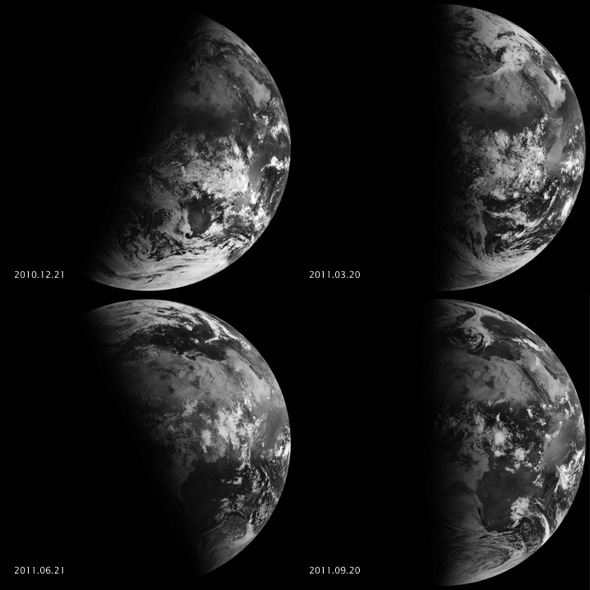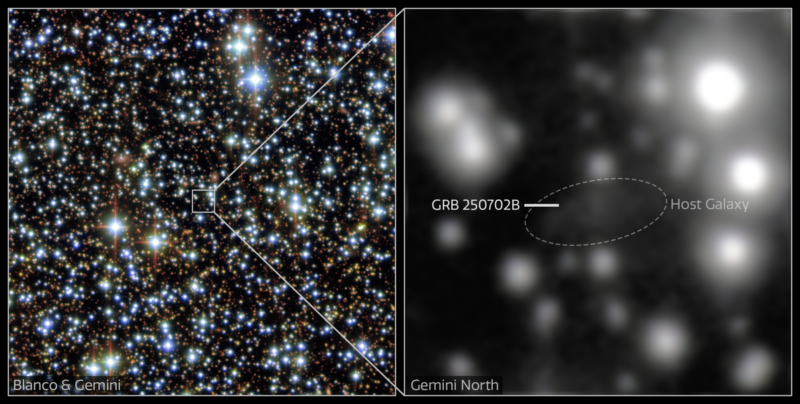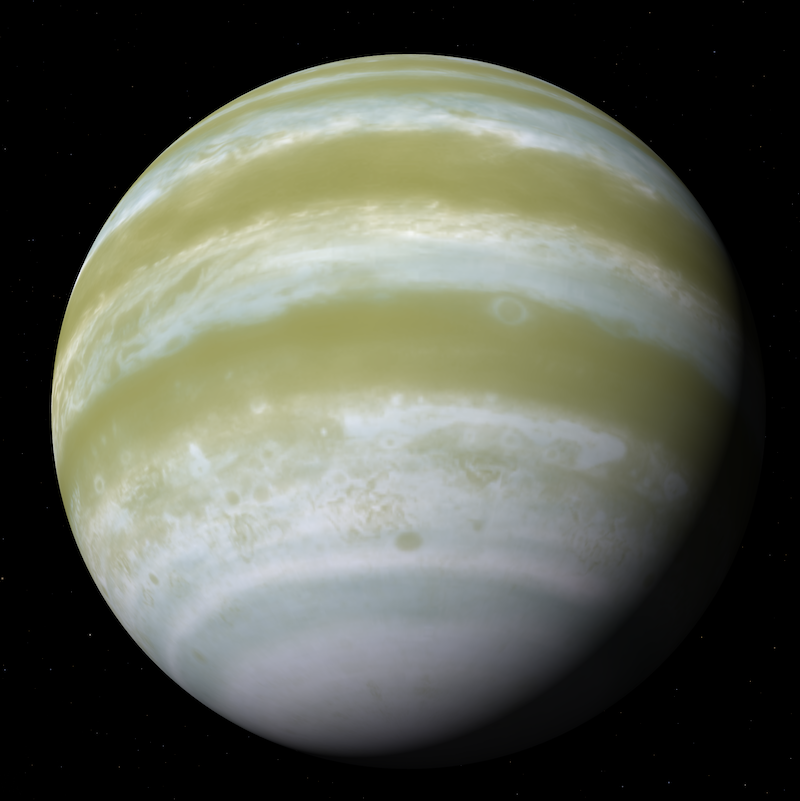Now Reading: Solstices and equinoxes in a video from space
-
01
Solstices and equinoxes in a video from space
Solstices and equinoxes in a video from space

Solstices and equinoxes
The December solstice (winter for the Northern Hemisphere, summer for the Southern Hemisphere) will take place at 9:21 UTC on December 21, 2024. That’s 3:21 a.m. CST.
Later, in 2025, the March equinox (start of spring for the Northern Hemisphere, autumn for the Southern Hemisphere) takes place at 9:01 UTC, March 20 (4:01 a.m. CDT).
As an illustration, a solstice marks the sun’s southernmost and northernmost points in our sky. An equinox, meanwhile, marks when the sun crosses over the Earth’s equator.
The 2025 lunar calendars are here! Best Christmas gifts in the universe! Check ’em out here.
Summer and winter
In addition, the fact that Earth’s Northern and Southern Hemispheres have their summers and winters at opposite times of the year provides a clue to the reason for Earth’s seasons. That reason is Earth’s 23 1/2-degree tilt on its axis. It’s natural, of course, to think our world’s seasons result from our changing distance from the sun. But we’re closer to the sun in northern winter, and farther from the sun in northern summer. So, it’s not Earth’s distance from the sun that causes the seasons to change. Instead, on our tilted world, the angle of sunlight striking your location shifts in a yearly cycle, as we travel around the sun.
The photos and video on this page – from NASA – show Earth’s solstices and equinoxes from space. They can help you visualize why our seasons unfold as they do, continuously, throughout each year.

Viewing the solstices and equinoxes from space
EUMETSAT‘s Meteosat-9 (a weather satellite) captured the four views above of Earth from geosynchronous orbit in 2010 and 2011. A satellite in geosynchronous orbit stays over the same point on Earth all the time. And the images above show how sunlight fell on the Earth on December 21, 2010 (upper left), March 20, 2011 (upper right), June 21, 2011 (lower left), and September 20, 2011 (lower right). Also, each image was taken at 6:12 a.m. local time.
Around 6 a.m. local time each day, the sun, Earth, and any geosynchronous satellite form a right angle. Thus, affording a straight-down view of Earth’s terminator line, that is, the line between our world’s day and night sides. The shape of this line between night and day varies with the seasons. And as a result, causes different lengths of days and differing amounts of warming sunshine.
However, while the line is actually a curve because the Earth is round, satellite images show it in two dimensions only.
The terminator
On March 21 and September 23, the terminator is a straight north-south line, and the sun sits directly above the equator. Then, on December 21, the sun resides directly over the Tropic of Capricorn when viewed from the ground, and sunlight spreads over more of the Southern Hemisphere. Next, on June 21, the sun sits above the Tropic of Cancer, spreading more sunlight in the north.

Bottom line: A video from NASA shows how sunlight falls on Earth’s surface during the solstices and equinoxes, as seen by the weather satellite Meteosat-9 in 2010 and 2011.
Enjoying EarthSky? Sign up for our free daily newsletter today!
The post Solstices and equinoxes in a video from space first appeared on EarthSky.
Stay Informed With the Latest & Most Important News
Previous Post
Next Post
-
 012024 in Review: Highlights from NASA in Silicon Valley
012024 in Review: Highlights from NASA in Silicon Valley -
 02Panasonic Leica Summilux DG 15mm f/1.7 ASPH review
02Panasonic Leica Summilux DG 15mm f/1.7 ASPH review -
 03From Polymerization-Enabled Folding and Assembly to Chemical Evolution: Key Processes for Emergence of Functional Polymers in the Origin of Life
03From Polymerization-Enabled Folding and Assembly to Chemical Evolution: Key Processes for Emergence of Functional Polymers in the Origin of Life -
 04How New NASA, India Earth Satellite NISAR Will See Earth
04How New NASA, India Earth Satellite NISAR Will See Earth -
 05And Thus Begins A New Year For Life On Earth
05And Thus Begins A New Year For Life On Earth -
 06Astronomy Activation Ambassadors: A New Era
06Astronomy Activation Ambassadors: A New Era -
07SpaceX launch surge helps set new global launch record in 2024




















